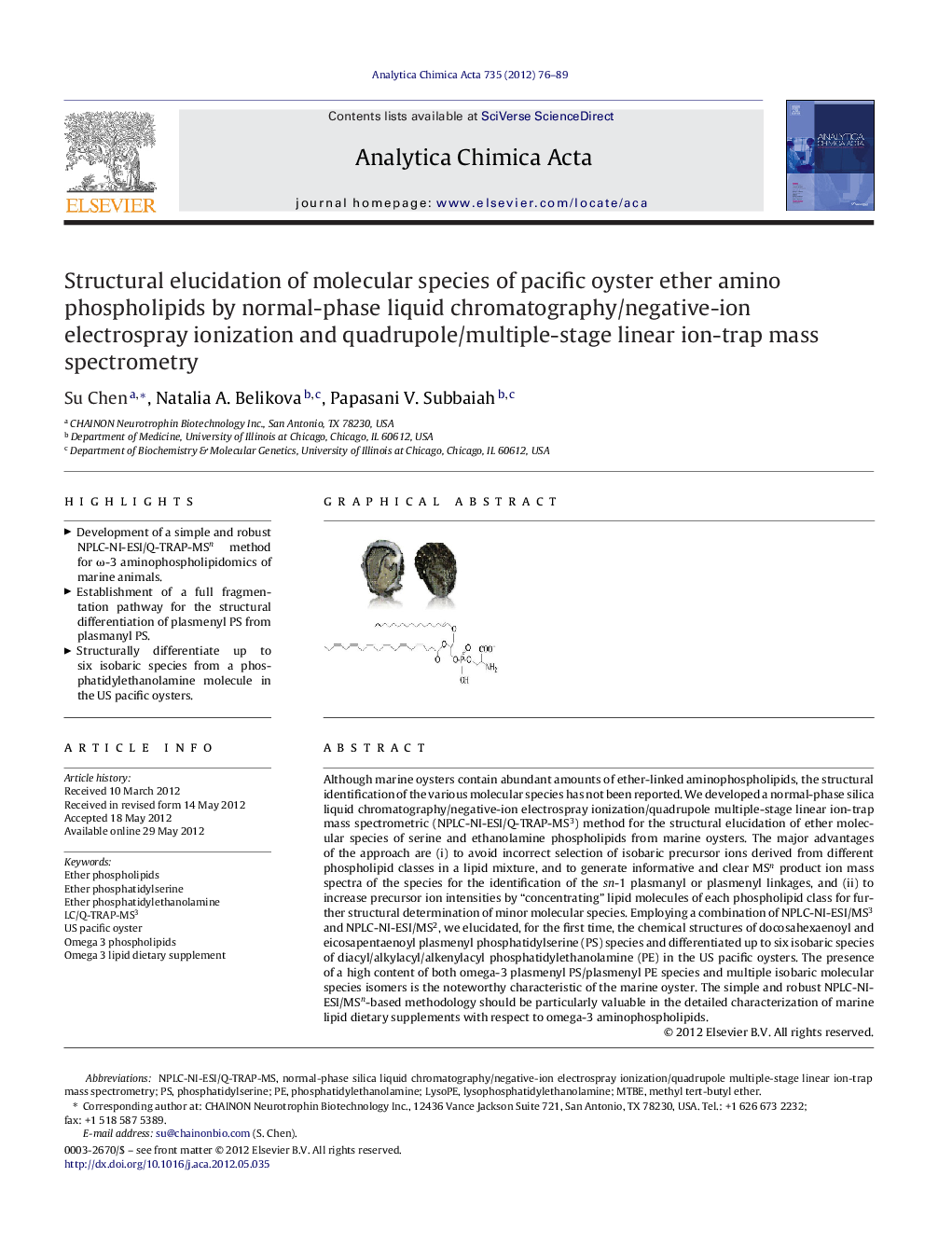| Article ID | Journal | Published Year | Pages | File Type |
|---|---|---|---|---|
| 1166000 | Analytica Chimica Acta | 2012 | 14 Pages |
Although marine oysters contain abundant amounts of ether-linked aminophospholipids, the structural identification of the various molecular species has not been reported. We developed a normal-phase silica liquid chromatography/negative-ion electrospray ionization/quadrupole multiple-stage linear ion-trap mass spectrometric (NPLC-NI-ESI/Q-TRAP-MS3) method for the structural elucidation of ether molecular species of serine and ethanolamine phospholipids from marine oysters. The major advantages of the approach are (i) to avoid incorrect selection of isobaric precursor ions derived from different phospholipid classes in a lipid mixture, and to generate informative and clear MSn product ion mass spectra of the species for the identification of the sn-1 plasmanyl or plasmenyl linkages, and (ii) to increase precursor ion intensities by “concentrating” lipid molecules of each phospholipid class for further structural determination of minor molecular species. Employing a combination of NPLC-NI-ESI/MS3 and NPLC-NI-ESI/MS2, we elucidated, for the first time, the chemical structures of docosahexaenoyl and eicosapentaenoyl plasmenyl phosphatidylserine (PS) species and differentiated up to six isobaric species of diacyl/alkylacyl/alkenylacyl phosphatidylethanolamine (PE) in the US pacific oysters. The presence of a high content of both omega-3 plasmenyl PS/plasmenyl PE species and multiple isobaric molecular species isomers is the noteworthy characteristic of the marine oyster. The simple and robust NPLC-NI-ESI/MSn-based methodology should be particularly valuable in the detailed characterization of marine lipid dietary supplements with respect to omega-3 aminophospholipids.
Graphical abstractFigure optionsDownload full-size imageDownload as PowerPoint slideHighlights► Development of a simple and robust NPLC-NI-ESI/Q-TRAP-MSn method for ω-3 aminophospholipidomics of marine animals. ► Establishment of a full fragmentation pathway for the structural differentiation of plasmenyl PS from plasmanyl PS. ► Structurally differentiate up to six isobaric species from a phosphatidylethanolamine molecule in the US pacific oysters.
